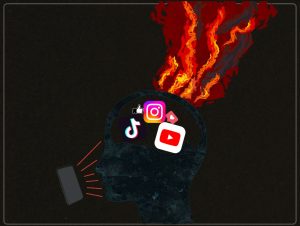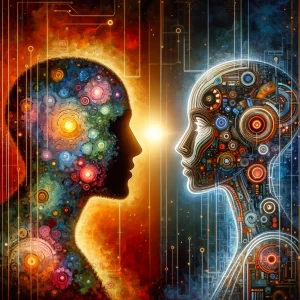Medicine will evolve whether we like it or not.
Medicine, like many other fields, changed over time. It is sometimes hard to believe that 170 years ago we still used bloodletting as a common form of healing the sick. Even though there was evidence that bloodletting was nothing more than pseudo science, some experts such as Philip Pye-Smith, still defended it on scientific grounds, claiming and re-affirming the superiority of mainstream physicians and their clinical experience over irregular practitioners with their “laboratory knowledge”. These views were defended up to as late as 1923 and even used in a published book “The Principles and Practice of Medicine”. Nowadays the usage of bloodletting as a universal cure for most ailments is unthinkable. Given the incredible technological growth we have seen in the last few decades, it is fair to assume that the same growth will be happening for the medical field as well, regardless of the opinions of medical professionals. In fact, we can already see the effects of the digital age on the medicinal field. If we were to look at what seems normal to us today, might be considered astonishing by most as little as 100 years ago.
We do not even need to look far. The easiest examples we can give are computed tomography scans, or CT scans for short. Since CT was introduced, it has become an important tool in medical imaging along with x-rays and medical ultrasonography. Its usage has increased dramatically over the past two decades despite its substantially higher radiation exposure than conventional x-rays.
One more recent example of modern technology oozing into the medicinal field is with the Da Vinci Surgical System. Although it was founded 26 years ago, the company Intuitive has made significant changes in traditional open surgery. With this surgical system, DaVinci avoids large incisions and therefore allows for a minimally invasive surgery. This system allows surgeons to extend their very limited capabilities of human hands and eyes with robotic ones.
So how will AI affect medicine?
For some without any experience in medicine or AI the first thought that might come to mind is automated diagnosing, blood tests, x-rays or perhaps even a fully automated general practitioner. These thoughts are valid, and perhaps in time might even become reality. However for now we can see small, but incredibly significant, steps being made to introduce AI into the medical field.
One prime example of where AI would be most beneficial is with radiology. Radiologists, the experts on diagnosing diseases using medical imaging, are always required to be sharp. With AI, radiologists may receive help with repetitive routine tasks, get a second opinion on their diagnosis or perhaps AI could eliminate bias that a radiologist might have after an excruciatingly long day of work. In another article about the use of AI in medicine as well as AI’s place in radiology, it is mentioned that AI could “…provide substantial aid in radiology by not only labeling abnormal exams but also by identifying quick negative exams in computed tomographies, X-rays, magnetic resonance images especially in high volume settings, and in hospitals with less available human resources.” To really hammer in the point of using AI in radiology, deep learning specifically, with the advent of powerful parallel computing hardware based on graphical processing units, has become a state-of-the-art technique in computer vision. This machine learning technique has garnered interested in its spectacular performance in detection, segmentation, classification, and prediction. With these techniques available to radiologists they are able to optimize clinical workflow. As already mentioned, this just seems to confirm that AI will be able to automate various time-consuming tasks such as lesion detection, segmentation, classification, monitoring and possibly even prediction of treatment response.
There are two more examples we can also look at that can be of great significance. The first will be the usage of AI in drug discovery, while the second one will be an example of AI in direct communication with the patients themselves.
Arguably an area where a developed AI would be most welcome, the drug discovery process is time consuming and expensive. With an AI in this field, not only would it increase efficiency but also minimize the huge risk of human error. With this in mind there will be a decrease in produced waste,a better quality of the end product, and a larger profit for companies. These exact reasons are why there is such a huge investment in the development of AI for specific tasks, or to be exact, why there is a huge investment in Artificial Narrow Intelligence. Just as with radiology, with the advancement of deep learning techniques, there seem to have been great strides made with regards to relevant modeling studies. It was noticed that DL can be implemented for safety and efficacy evaluations of drug molecules based on big data modeling and analysis.
When it comes to the interaction with humans, we have to understand that a hospitalized person is not the only that might be receiving help from an AI system. We can look at diabetes as a way to manage health via AI. Since diabetes is a chronic health condition that affects the pancreas, a person has to learn how to properly manage their glucose levels on their own using specifically made devices. However, in a paper by Ignacio Rodriguez, it is mentioned how there are advances achieved in ICT which allows us to collect more information from a single person. Combined with the so-called field of ”e-health”, the management of the information via techniques of Machine learning and data processing could bring improvements to the Diabetes Mellitus (DM1) management field. After a theoretical study, an Internet of Things (IoT) platform model has been proposed in which the inputs to be considered are established, as well as the technological possibilities for managing DM1 through this data collection. Given all of that information the author believes a potential ”cure” for DM1 might even be possible. To quote the author themselves: ”A closed-loop control system, with a continuous input of the monitoring variables, a glucose prediction output and, in turn, a feedback input that modifies the amount of insulin to be injected by the corresponding infusion pump would constitute, no doubt, an artificial pancreas that would, obviously, be the one, expected by millions of people, ”technological cure” of DM1.”
Will AI replace doctors?
With more and more jobs facing the threat of automation in recent years, even some of the best trained, highly educated professionals begin to fear for the future of their employment. According to the 2016 Oxford University report 47% of american employment could already be displaced through the use of machines and AI in the mid 2030’s. Healthcare support workers such as nurses take a high place on that list. Doctors, however, don’t have much to worry about. Or do they? After all, with the rise of Artificial Intelligence we can already observe the machines performing better at certain aspects of their work. In a study by Google Health and Imperial College London, it was proven that AI is more accurate than professional radiologists when it comes to detecting certain forms of cancer. It took the combined effort of two doctors to match the accuracy of the AI which comes with an additional benefit of reduced randomness, not getting tired… or paid.
With the rise of AI, repetitive, mechanical jobs or ones requiring pattern or image recognition could face large scale displacement but how come the job of radiologists is not in the “high risk” category of the Oxford report? The introduction of AI could greatly reduce the workload for those professionals but the final judgement by a human and their personal contact with the patient will always be necessary in this field. The AI could instead allow the processing of more cases with higher certainty and even lead to the reduction of cancer treatment costs for the patients, it will also allow radiologists to focus on other, more dire and less repetitive tasks, according to the director of UK cancer research center, Prof Ara Darzi.
Regarding surgeons, their profession is hardly in any danger at all. The risk of automation of less than half a percent in the aforementioned Oxford report is easily justified by the great skill of perception and manipulation required for this job that any narrow AI is not predicted to be able to achieve (with general artificial intelligence, similar to that of a human, being way out of the picture as for now). Now, many will point out that surgical robots already exist and have also been proven to be more precise than their human counterparts. That would of course be true, however there seems to be a lot of misconception around this topic. Most of said robots are not autonomous and need to be operated by trained surgeons. Systems such as da Vinci, while providing an extremely precise and non-invasive tool for the surgeon, are merely an extension of his skill. Even provided certain simple surgeries could be performed by autonomous AI, it would need to happen in a controlled environment with a calm and cooperating or unconscious patient, that would only allow the surgeons to focus on more important tasks rather than render his profession obsolete.
Still, not all doctors specialize in surgery or radiology, what about your everyday practitioners that diagnose you with flu and prescribe the appropriate dosage of whatever medicine is required, surely an AI could handle prescription and dosages? While the technology already allows us to detect and treat basic diseases easier and more efficiently, it does not diminish the role of doctors in the process. AI-based solutions have already been proven no inferior to humans in their capability to help patients suffering from diabetes. Patients can now control their dosage of insulin with greater precision than ever but while it reduces the workload of a doctor, it does not remove the necessity of a dialogue and consultation as well as judgement so as to the ongoing therapy. It is likely that in the future the AI will be able to diagnose basic diseases and help prescribe the proper dosages, but much like in case of the treatment of diabetes or even detection of cancer, it will only allow the doctor to focus on more important tasks and could even lower the cost of healthcare.
In any case, given a purely hypothetical scenario where the AI is able to perform all of the jobs of a general practitioner or a specialist, the need for human interaction cannot be understated. In a study Resistance to Medical Artificial Intelligence, it has been shown that despite the higher accuracy of AI in certain types of diagnoses, humans are almost twice as likely to trust humans with the diagnosis, even if the diagnosis by AI was free of charge. This bias was further confirmed by another study, where participants showed a clear preference for human doctors despite being provided with information proving superior AI accuracy. Another thing to consider is the simple human necessity of human interaction and empathy. No one wants to have the bad news broken to them by a medical equivalent of Siri or Alexa, no one wants to be alone in a hospital room with no nurses or doctors around. And when it comes to making mistakes, human errors can often be excused while an autonomous AI would likely become a victim of great slander and public mistrust had it ever made an unsupervised mistake. Given all this, it can be concluded that the AI should and most definitely will aid, rather than replace doctors.
Do we even have a choice?
The issue of job automation has been under discussion for decades and the concerns are everlastingly on the rise, especially in the modern day. We can observe this phenomenon dating back all the way to the stocking production’s automation in the XVI century or in greater detail – during the industrial revolution, when the unprecedented degree of urbanization forced many rural communities into rapidly expanding cities to provide the workforce for factories making use of steam-powered machinery. The increasing demand for food also entailed the introduction of more advanced farming machines.
Not everyone was glad to see the world change this way. As early as in 1811 in Nottinghamshire, United Kingdom, a group of resistance was formed, they called themselves the Luddites and within a year their movement spread all over the country. The Luddites opposed the use of newly arised machinery, such as power looms, that stripped many workers of their jobs. For years the Luddites continued to vandalize factories, destroy machinery and threaten or even attack employees as well as government officials despite machine breaking becoming punishable by death and many of them being executed. Their resistance, quite understandably ended up being futile and instead of being remembered as heroes, we know them as a relic of the past that failed to halt the everlasting and unstoppable technological progress. It is only natural that this will also be the case with the adoption of AI by modern businesses.
Moving forward to the XX century, the complex task of car manufacturing began its automation process already in the 70’s with companies such as Fiat even using it to promote their products. Such assembly-line jobs were the first ones to see automation with the use of robots. Nowadays this is a norm and companies such as Tesla even began to fully automate production of their automobiles. While this process did render some workers unemployed, it also created new occupations and despite the protests of many, the businesses are not looking back. While the possibility of government regulations to slow down the process of job automation exists, they will not halt it forever, especially in the field of medicine, where it is in fact in the public interest to employ AI in order to increase efficiency and reduce cost of treatment. If a possibility exists for any technology to help save human lives, it will not take us long to accept it, regardless of whether it requires the workers to adapt or change their profession entirely. In the end, it will depend on the viability of the possible solutions and their profitability, as profit-driven businesses are and will remain the greatest factor in new technologies entering the market. And after all, no sacrifice has as of yet managed to stop humanity’s great endeavours in the name of progress.


